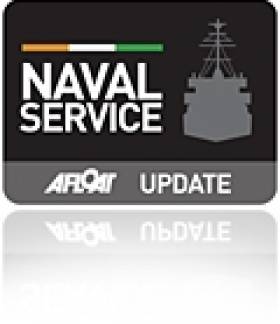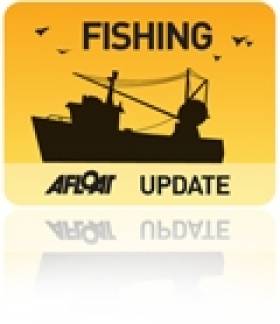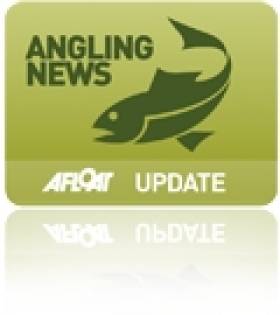Displaying items by tag: Bord Bia
Bord Bia Says Food Supply Chains Very Exposed to Brexit Risks
#Ports&Shipping - State agency Bord Bia has published a a strategy guide to assist Irish food and drink manufacturers to identify operations partners and establish more efficient distribution channels.
As the Irish Farmers Journal reports increased lead times, especially for short shelf life products, in conjunction with a complex and intense supply chain has been highlighted as the key problem for Irish food and drink companies post-Brexit. In its latest report, Bord Bia has outlined what different logistics service providers are doing in preparation for Brexit.
Research suggests that companies are hiring more people with customs experience, reviewing shipping lines to avoid the UK landbridge, expanding the use of unaccompanied trailers on shipping legs, increasing the number of warehouses at ports and introducing double deck trailers to increase capacity in efforts to maintain smooth and efficient transport.
However, it has been highlighted that the Dublin port does not have sufficient capacity to accommodate significant increases in queued or parked vehicles that may result if processing times increase. For further reading on the story click the link here.
Roisin Returns from Russia
In addition the OPV delivered medical supplies on her visit to Riga, the Latvian capital, where the cargo was transported in aid of the Chernobyl Children's Project based in Belarus.
Coveney Welcomes Seafood Exports Boost
Minister Coveney thanked Bord Bia, who organised the Irish participation, for their successful efforts over the year which saw seafood exports increase in 2010 by 18% to €365m. The Minister said that "Irish Seafood exporters are indigenous businesses with significant scope for expansion who have an important role to play on the road to National economic recovery".
The Minister added that "it is very encouraging that our seafood exports increased by 18% last year. Over 70% of our Seafood exports are sold in EU Markets and hence it is important to see such a strong representation from the Irish Seafood Exporters here at this trade expo, the major annual seafood trade event within Europe. There are more exhibitors this year than in 2010. The Irish seafood sector has exciting potential for further development on the domestic and international markets. If we want to continue towards a high margin export strategy we need to co-operate with each other, continue to differentiate, innovate and develop products based on customer feedback and market research".
On Ireland's international reputation for wholesome, fresh and natural seafood, produced in a sustainable and environmentally friendly manner, the Minister said "this is a key selling point for Irish seafood companies and together with Bord Bia's marketing expertise, and the co-operation and determination of our seafood industry I am confident that we will have a more vibrant and successful sector in the years to come".
The Minister also used the opportunity of his visit to Brussels to meet with the European Commissioner for Research, Innovation and Science, Maire Geoghegan- Quinn. The Minister said "I see the Commissioner as an important ally for Ireland in the Commission and in Europe. I am anxious to develop a strong working relationship with her".
The Commissioner's directorate is responsible for the €142 billion budget of the new Common Strategic Framework 2014-2020 (CSF) Programme, which will combine the funding of a number of current competitive research programmes into a single strategic research vehicle. The Minister went on to say that from an Irish perspective "it is vital that the expertise, previous championing and contribution to the development of research based policy formulation in Europe materialises itself into being successful in the tendering processes in new research programmes. I outlined some of the work of the Marine Institute on the EU front in recent times and the opportunities that it and other Irish research bodies can realise using the expertise and experience built up. I also used the occasion to brief Commissioner Geoghegan-Quinn on the major policy challenges we are facing in agriculture and fisheries, particularly the reforms of the Common Agricultural Policy(CAP) and the Common Fisheries Policy (CFP). The Minister outlined his strong concerns relating to the proposed EU Mercosur Trade Agreement and its impact on the agri food sector in Ireland".
IEA Export Industry Awards to Shipping
In the category of Short Sea Shipping Company of the Year, sponsored by the Irish Maritime Development Office, which recognises the strategically important role of short sea shipping to our economy, the winner of the award was CLDN Colbefret Group.
The Belgium operator opened two new routes from Dublin to Rotterdam and Zeebrugge in November last year, providing a range of transport options to Irish exporters selling to Europe. Since then Cobelfret have gradually introduced new Con-Ro (Containers and Roll-On/Roll-Off) vessels onto the continental routes. The six 25,000 gross tonnes newbuilds were built by FGS Flensburg, Germany and the latest unit Opaline, is due to make a Dublin debut tomorrow.
Cobelfret's operations in Dublin are based in Alexandra Basin East using the ports No. 2 ro-ro linkspan berth. A previous linkspan built in the 1950's was demolished last summer to develop a larger linkspan, to cater for larger tonnage like the Opaline. The new vessel has 2,907 lane metres for freight vehicles spread over three decks and a container capacity for 854 TEU mafi-trailers.
Donegal based Marine Harvest won the Seafood Export Award, sponsored by Bord Biá. The company is an indigenous fully-integrated salmon breeding, farming and processing operation, exporting premium products to Europe and North America.
The overall winner of the IEA's Export Industry Award for 2010 was the Irish Dairy Board.
Fly tying to be Centrepiece of New Angling Exhibition
Most of the top names in fly tying and angling will be in Galway this November for the inaugural Irish Fly Fair say Galway organisers. Well known game angler Stevie Munn will be in town in partnership with Irish Angler magazine. The event sponsored by Inland Fisheries Ireland has succeeded in attracting many of the world's best fly tyers and anglers – including the top Irish ones – to what promises to be a great weekend for anglers and their families.
Centerpiece of the event will be the fly tying area, where over 30 world class experts will give demonstrations of their art and skill, as well as lessons in the techniques of constructing Salmon, Trout, Pike and Saltwater flies.
In addition there will be casting demonstrations by World renowned Fly Casters and also instruction from fully qualified instructors.
For those looking for Christmas gifts, there will be a wide range of tackle and other retailers with lots of bargains on offer.
There will be lots for the family too. For the first time ever in Ireland French firm Scatri will be letting people practice their angling skills on their range of fishing simulators. Galway Aquarium will allow visitors to see the wide range of fish and other creatures that live in our waters up close and personal and also an expert on entomology will be there. Galway Bay FM will broadcast live from the event on Saturday. Chef Chris Sanford will prepare a number of haddock recipes throughout the weekend, to complement Bord Bia's current promotional campaign to increase the awareness, and Irish consumer's consumption, of haddock.
More information HERE






























































